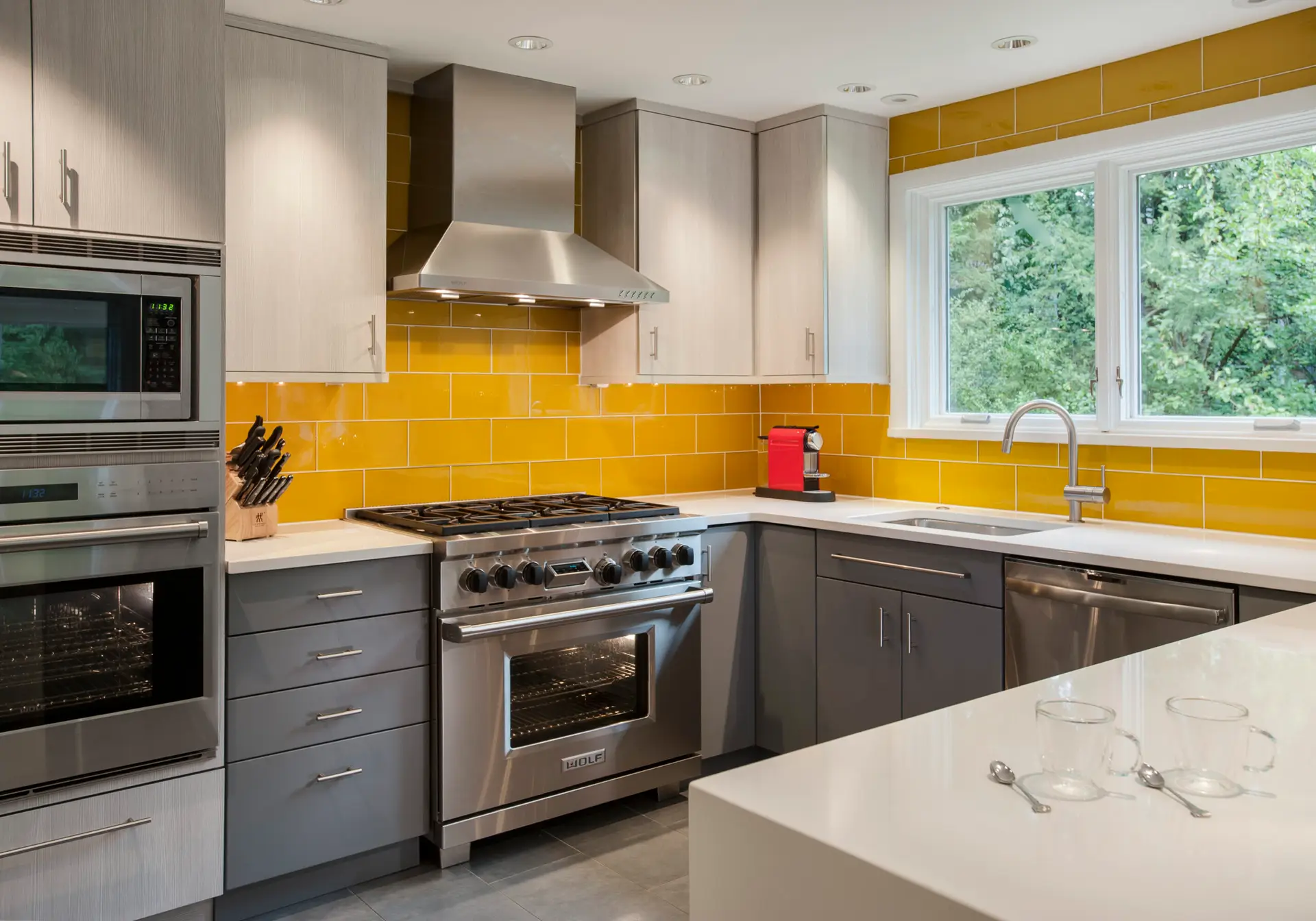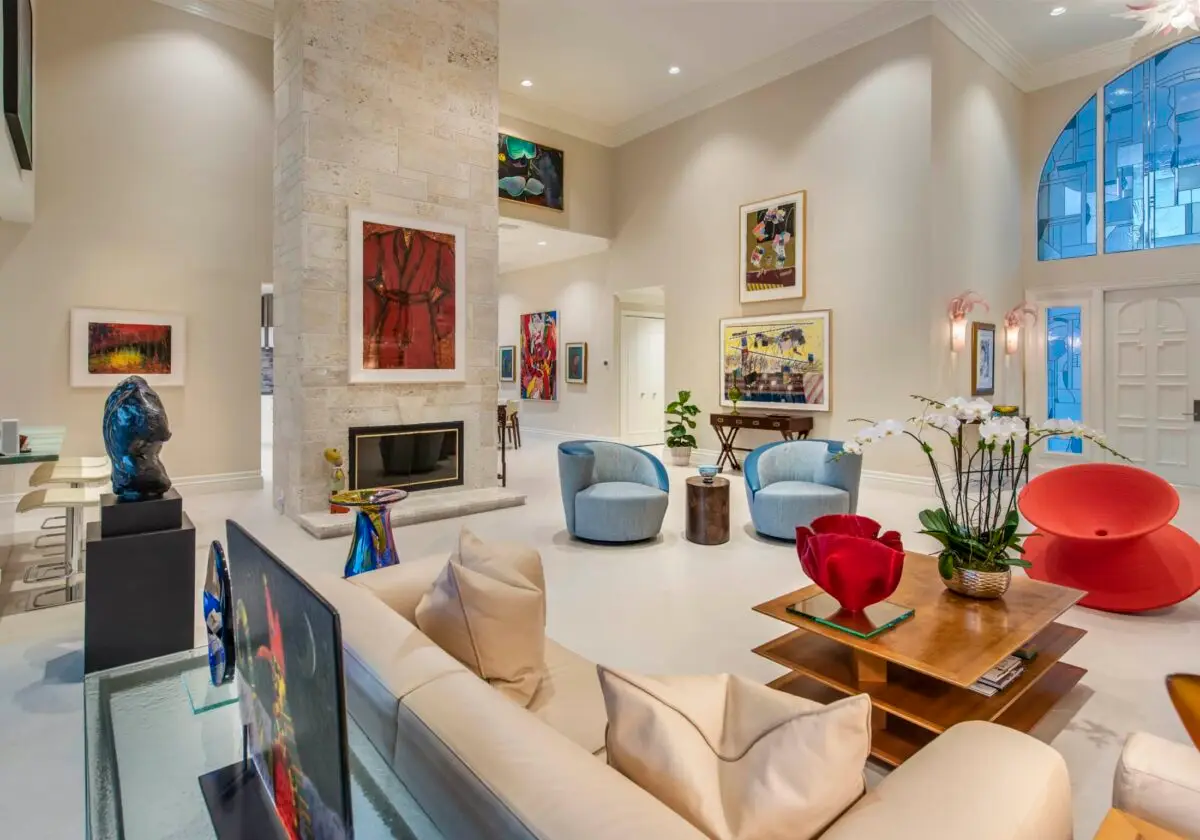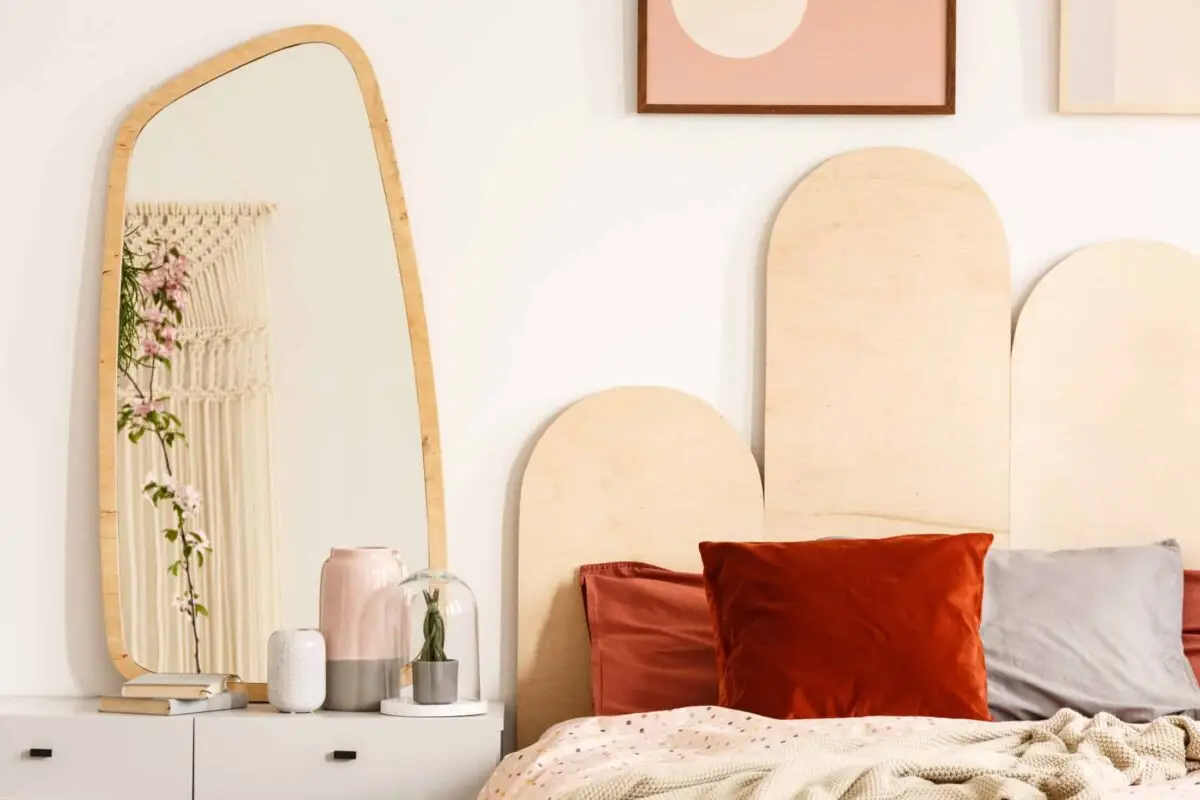In our last Blog post we discussed how to make smaller spaces seem larger, because not every home or room we design is large. Frequently in urban residences, where space is a premium and we can’t add an addition, we must make the rooms we have seem larger. As interior designers we are experts at designing three-dimensional spaces for living. We consider the space plan, entrance and egress, the natural light, the artificial light, balance, proportion, scale, function and aesthetics. We manipulate the space to make the user feel their environment the way we intended it to be felt. Often our goal is for the viewer to experience the space as much larger than it really is. So how do we do that? Here is Part 2 of some “tricks of the trade” to make a smaller space feel larger.
Trompe l’Oeil
French for “fool the eye.” A three-dimensional mural on a wall, floor or ceiling can open up the space and make it feel larger because the perspective achieved makes the viewer forget where the plane of the wall is and fools the eye into thinking the space goes beyond its physical limits.

Simplify Your Materials and Finishes
Similar to six sides alike, using a limited vocabulary of materials and finishes will help a space feel larger. The more surfaces change in a room the more “chopped up” it will feel. Design is about editing, pick one or two materials, and stick to those. Each time you change materials you define where one surface ends and the next begins and that will make your space feel smaller.

Scale
Scale is one of the most important design principals and it is frequently off in most interiors. If the scale of a room isn’t right you will feel it. It may be a room with pretty colors and beautiful things in it, but something will feel odd about the space without the viewer even knowing why it doesn’t feel right. When designing a smaller space the scale of the furnishings must be sized to the space. In small rooms, small scale furniture will make the room feel much larger. We have taken oversized furniture out of rooms and replaced it with appropriate scaled furniture and clients have been amazed at how much larger the room feels. Remember scale is so important.

Good Lighting
Lighting is one of the most important elements in interior design and yet the most frequently underused. It is the most frequent line-item that gets cut from the budget. Good lighting can make or break a room. You should be spending at least 10% of your budget on lighting.

Art
Believe it or not selecting the right art for a room can make it feel larger or smaller. Consider two paintings of the same size. One is a modern abstract canvas of color, just color on the canvas; the other painting is a landscape or seascape that feels like you can see far away for miles and miles. Which painting do you think will make the room feel larger? Because the landscape/seascape painting adds perspective and much like the Trompe l’Oeil fools the eye into forgetting where the canvas ends. It draws in the eye and act like a window in the room, taking the viewer beyond the canvas into a deeper space.





